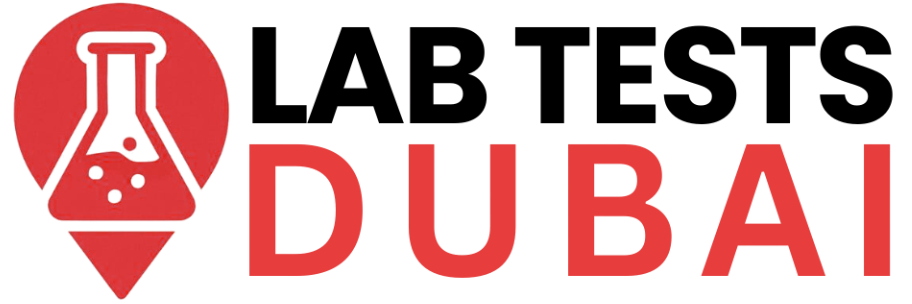
Excisional specimen (skin excision, cyst (simple), polyp, bone, lipoma (small), and endometrial biopsy excessive quantity).
550,00 د.إ
A comprehensive excisional specimen collection designed for diagnostic and pathological analysis, including skin excisions, simple cysts, polyps, small lipomas, bone samples, and endometrial biopsies in excessive quantity.
Sample Type : Fixed Tissue in 10% Formalin
Methodology : Histopathology
TAT : 3 Days
Description
Excisional Specimen Histopathology – Comprehensive Tissue Analysis for Skin, Cyst, Polyp, Bone, Lipoma & Endometrial Biopsies
The Excisional Specimen Histopathology Service from Lab Tests Dubai is a critical diagnostic procedurefor evaluating surgically removed tissues, including:
- Skin lesions (e.g., moles, suspicious growths)
- Simple cysts (epidermal, sebaceous)
- Polyps (colonic, endometrial, nasal)
- Small lipomas (benign fatty tumors)
- Bone fragments (e.g., curettage, small resections)
- Endometrial biopsies with excessive tissue
Using gold-standard histopathological techniques, this service provides microscopic evaluation of tissue architecture, cellular morphology, and margin status—delivering accurate, actionable diagnoses.
With a 3-day turnaround time, Lab Tests Dubai supports clinicians, surgeons, and hospitals in making timely treatment decisions—ensuring patients receive the right care, fast.
All specimens are processed, embedded, sectioned, stained (H&E), and interpreted by certified histopathologists—ensuring precision, compliance, and diagnostic confidence.
Why You Need This Test
Once a tissue is excised, histopathology is the only way to confirm diagnosis.
You need this test when:
- A skin lesion is removed and needs benign vs. malignant confirmation (e.g., melanoma, BCC, SCC)
- A cyst or lump is excised and requires histological classification
- A polyp is removed during colonoscopy or hysteroscopy
- A lipoma is excised to rule out atypical lipomatous tumor
- Bone fragments are retrieved (e.g., from curettage or trauma)
- An endometrial biopsy yields excessive tissue requiring full sectioning and analysis
This test confirms:
- Diagnosis (benign, premalignant, malignant)
- Tumor margins (clear vs. involved)
- Grade and depth of invasion
- Presence of inflammation, infection, or dysplasia
Without histopathology, surgery is incomplete.
Symptoms That Indicate This Test
This is a post-procedure diagnostic step—performed after tissue excision. It’s indicated when:
- A skin lesion changes in color, size, or texture (ABCDE rule)
- A palpable lump is removed (e.g., sebaceous cyst, lipoma)
- A patient has abnormal uterine bleeding and an endometrial biopsy is taken
- Polyps are removed from colon, uterus, or nose
- Bone tissue is retrieved during dental, orthopedic, or surgical procedures
The test is not symptom-based—it’s essential for every excised tissue, no matter how “routine” it appears.
Natural Production: What Happens When Tissue Grows Abnormally
The body continuously regenerates tissue through controlled cell division. But when this process is disrupted by:
- Genetic mutations
- Chronic inflammation
- Hormonal imbalances
- Environmental exposure (e.g., UV radiation, toxins)
…it can lead to:
- Skin cancers (BCC, SCC, melanoma)
- Cysts from blocked ducts
- Polyps from mucosal overgrowth
- Lipomas from adipose tissue proliferation
- Endometrial hyperplasia from estrogen dominance
- Bone lesions from trauma or metabolic disease
Histopathology identifies whether growth is reactive, benign, or malignant—guiding next steps.
What Happens If Untreated or Undiagnosed? Risks of Skipping Histology
Skipping histopathology after excision can lead to:
⚠️ Missed Cancer Diagnosis – e.g., melanoma mistaken for a mole
⚠️ Incomplete Excision – positive margins not detected → recurrence
⚠️ Delayed Treatment – malignant polyps or hyperplasia left untreated
⚠️ Metastasis Risk – especially in skin and endometrial cancers
⚠️ Legal & Clinical Risk – no documentation of diagnosis or clearance
Even “simple” excisions require microscopic confirmation. A lipoma could be a well-differentiated liposarcoma. A cyst could harbor squamous cell carcinoma.
Histology is non-negotiable in modern medicine.
How to Prepare for the Test
No patient preparation is needed—this is a laboratory procedure on excised tissue.
To ensure accurate results:
✅ Place the specimen in 10% neutral buffered formalin immediately after removal
✅ Use adequate fixative volume (10:1 formalin-to-tissue ratio)
✅ Label the container with:
- Patient name, ID
- Date and time of collection
- Site of excision (e.g., “left cheek,” “endometrium”)
✅ Submit with a completed pathology requisition form including: - Clinical history
- Suspected diagnosis
- Relevant symptoms or imaging
Lab Tests Dubai provides specimen transport kits, fixation guidelines, and digital submission forms for seamless processing.
Test Overview: Gold-Standard Histopathology Methodology
| Feature | Details |
| Test Name | Excisional Specimen Histopathology |
| Sample Type | Fixed Tissue in 10% Formalin |
| Methodology | Histopathology (H&E Staining) |
| Turnaround Time (TAT) | 3 Days (from lab receipt) |
| Category | Histopathology / Surgical Pathology |
| Purpose | Diagnose skin, cyst, polyp, lipoma, bone, endometrial, and other excised tissues |
| Reporting | Digital histology report with diagnosis, margin status, and clinical notes |
Process Includes:
- Gross examination (size, color, consistency)
- Tissue processing and embedding
- Microtome sectioning
- Hematoxylin & Eosin (H&E) staining
- Microscopic evaluation by certified pathologist
- Diagnostic report with recommendations
For complex cases, IHC or special stains can be added upon request.
FAQs About Excisional Specimen Histopathology
Q: Can I send a specimen from a private clinic or hospital?
A: Yes. We accept external submissions from all licensed healthcare providers.
Q: What if the tissue is not fixed?
A: Unfixed tissue degrades rapidly. We recommend formalin fixation within 1 hour of excision.
Q: Do you accept endometrial biopsies with heavy tissue?
A: Yes. We fully process excessive endometrial samples for complete evaluation.
Q: Can you assess tumor margins?
A: Yes. For skin cancers and excisions, we report margin status (involved/clear).
Q: How will I get results?
A: A secure digital report is emailed within 3 business days, including diagnosis and pathology images (if requested).
Q: Is this test covered by insurance?
A: Yes. Histopathology of excised tissue is mandatory and fully covered by all major UAE insurers.
Surgery is just the beginning. Histopathology is the end of the diagnostic journey.





Reviews
There are no reviews yet.